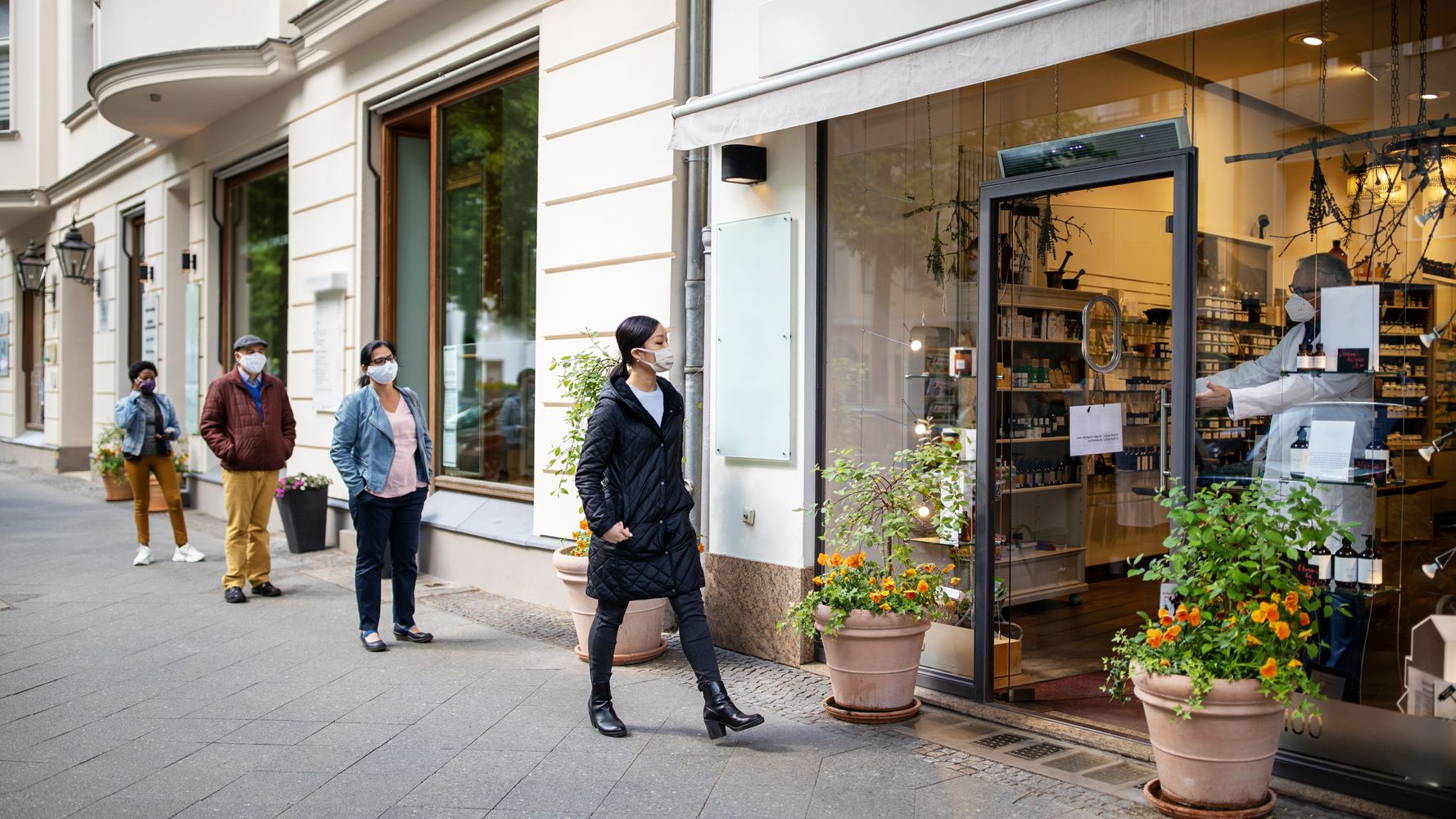At the beginning of the coronavirus pandemic in March, many of us were hopeful that things would be go back to normal by summer. But as we barrel toward the ninth month of COVID-19 infections and deaths, it’s hard not to question if this will ever be over.
We’re still in the early stages of the pandemic, according to Manisha Singal, a board certified internal medicine physician and chief medical officer at BridgePoint Hospital in Washington, D.C.
“The pandemic is still in the first half of an American football game. As much information as our scientists have gained to get us our touchdowns, COVID-19 is still blocking and tackling the best of us,” Singal said. “As we enter the winter months, there is the risk that we lose significant ground.”
As discouraging as that may sound, it doesn’t mean this won’t end. It simply means we’ll have to adjust our definition of “over.”
Paul Chung, chair of health systems science at the Kaiser Permanente Bernard J. Tyson School of Medicine, broke it down like this: “Does ‘over’ mean that life returns to 2019 conditions — no masking, no distancing, no hygiene, no fear? Or does ‘over’ mean something less — resumption of most 2019 activities, but with a heightened sense of caution and some attention paid to masking, distancing, and hygiene whenever practical?”
The steps to each endpoint are similar, but the timelines are different, Chung said. The first will take longer, probably on the order of two to three years (or maybe even more). The second could potentially happen by some time next year, if everything goes well.
But what does that even mean? What are these steps, and what needs to happen before this pandemic can be officially declared over? Here’s what experts say:
We need to tackle COVID-19 differently.
There needs to be a whole new approach to confronting the virus before the pandemic can be considered over or resolved, said Daniel B. Fagbuyi, an emergency room physician in Washington, D.C. That starts with leadership and a more coordinated, national pandemic plan.
“It is clear that the pandemic response and messaging has been mediocre,” Fagbuyi said. “The cessation of this pandemic clearly begins with national leadership change, a change of the old guard and a visionary that embraces science.”
Testing needs to improve.
Testing has gotten quite a bit better over the last few months, but there’s still room for improvement, according to Joseph Comber, a professor at Villanova University who specializes in public health and immunization.
“Several folks in the epidemiology and public health community … have argued for the widespread distribution of rapid antigen tests,” Comber said.
“Ideally these tests would be cheap and able to be performed every day in the home before someone goes to work, to school, etc.,” he continued. “Even if these tests aren’t perfect, if an individual tests positive they can isolate at home and avoid transmitting the virus to others. This is especially important, since there is a significant portion of spread driven by asymptomatic individuals. Widespread use of rapid test can drive down spread and infection rate in communities.”
We need a vaccine.
An effective vaccine will likely be a huge part of the pandemic coming to an end, said Rodney Rohde, a professor in the Clinical Laboratory Science Program at Texas State University and an expert in virology.
“By effective, I mean a vaccine that is relatively as effective as the flu vaccine, hopefully better, that will help create global ― or even regional if we are not able to mass produce one for global delivery at first ― herd immunity,” Rohde said.
Herd immunity at 80% or greater would be ideal, Fagbuyi said. The best way to accomplish this, he said, would be “by identifying safe and effective vaccines that neutralize the virus and augment the body’s immune response over a reasonable time frame without causing untoward side effects.”
Thankfully, it seems like we’re already headed toward this benchmark. Pfizer, Moderna and AstraZeneca have announced their COVID-19 vaccine candidates were highly effective at preventing the coronavirus in human tests, and it’s looking like some will be available for the first round of distribution by the end of 2020.
There needs to be fewer deaths and fewer infections.
This might go without saying, but seeing fewer COVID-19 deaths and infections would clearly indicate that we’re moving in the right direction. The mortality rate and the infection rate should drop significantly enough that it looks “somewhat normal” to the medical community, Rohde said. There’s no magic number, but it certainly would be far lower than the 200,000-plus daily infections we’re seeing right now in the United States.
“In other words, we have thousands of deaths and infections every year from things like influenza, West Nile virus and even antibiotic-resistant infections, and we have become somewhat used to the idea of a steady, low or ‘normal’ mortality of these agents,” Rohde said. “Again, this usually occurs either with a vaccine … or when the collective human population has enough infections or exposures to the virus that the population adapts and we have enough natural herd immunity to move on.”
The medical community needs a better understanding of long COVID.
Experts are still learning about COVID-19 and its effects, including the symptoms that last long after a patient has been cleared of the virus. William W. Li, a physician and disease researcher, said it’s important to gather more information about these long-term effects.
“The long-term effects of COVID-19 must be figured out, and effective treatments [must be] found and then delivered to the tens of millions of people who have been infected,” Li said. “Experts believe the serious long-term effects of COVID, sometimes called ‘long hauler’s syndrome’ could lead to a second pandemic of illness emerging in people who survived the initial infection and now suffer from a new condition that can surface many months after recovery.”

There needs to be a wider mask mandate.
Fagbuyi said a “national, universal mask mandate” also could contribute to the end of the pandemic.
“While masks aren’t perfect and 100% effective at preventing infection, they are a protective measure that protects both the person wearing the mask and others within the vicinity,” Fagbuyi said. “This is especially important given everything we are learning about transmission of the virus and that airborne transmission does occur.”
“What’s more, masks are one of the most straightforward and easy protective measures that anyone within a community can take,” Fagbuyi continued. “There is no real downside to wearing a mask. Of course, mask mandates must come with continual reminders of safe and effective hygiene practices like washing hands.”
We’ll likely need to continue some pandemic measures even after it’s over.
The “new normal” is a phrase that’s tossed around a lot as everyone looks forward to what comes next. But what will this new way of living really look like? Singal said there will be an era of continued vigilance.
“The practices of three Ws ― wear your masks, wash your hands and watch your distance ― are now indoctrinated necessities taught even to our preschoolers,” Singal said. “Due to lessons learned from past viruses, many people in Asian countries such as China have been wearing masks for years. This will become acceptable and expected across the United States well into 2022.”
Singal said we can also expect to see an “increased use of plastic barriers in places where people congregate to minimize infection, an explosion of online business that minimize human contact, and an increased focus on preventive care to enhance health and wellness.”
Experts are still learning about COVID-19. The information in this story is what was known or available as of publication, but guidance can change as scientists discover more about the virus. Please check the Centers for Disease Control and Prevention for the most updated recommendations.


